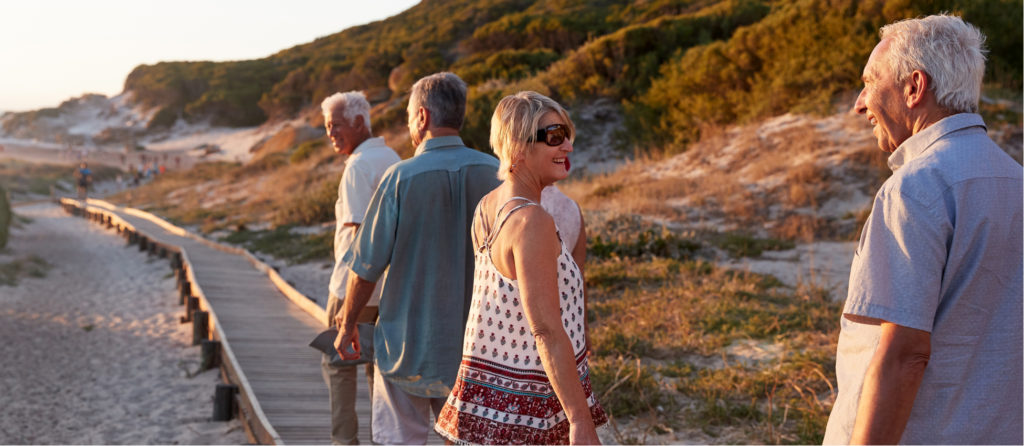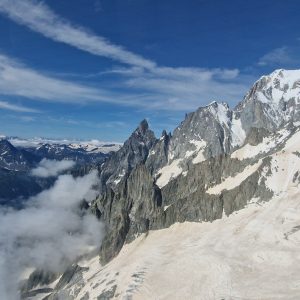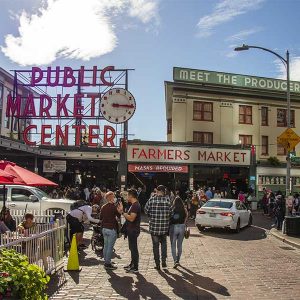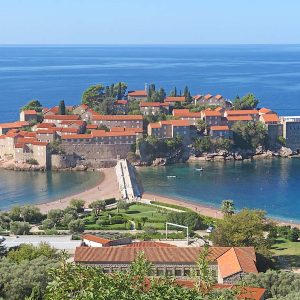The Grapes
A holiday combining great wine and golf? That would be a match made in heaven for many – but thankfully you don’t have to wait until you reach the Pearly Gates to enjoy the pairing. You can do so in the Pearl of Aquitaine, as the city of Bordeaux is known.
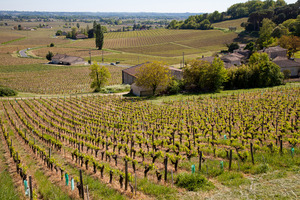 Regarded as the wine capital of the world, another nickname for it is Sleeping Beauty, coined for its historic, UNESCO-listed centre. However, Bordeaux was ranked as the world’s best city to visit in 2017 by Lonely Planet, underlining its transformation into a vibrant and trendy destination.
Regarded as the wine capital of the world, another nickname for it is Sleeping Beauty, coined for its historic, UNESCO-listed centre. However, Bordeaux was ranked as the world’s best city to visit in 2017 by Lonely Planet, underlining its transformation into a vibrant and trendy destination.
Throw in some top-notch golf courses set in rolling countryside studded with vineyards and world-famous wineries plus glorious cuisine and it becomes a mouth-watering combination.
Too tempting to resist, I undertake a four-day trip organised by Bordeaux-based tour operator Greens & Grapes with my golf clubs. The company was set up by Franco-Irish couple Sylvie and Lucius McPhilemy to cater to holidaying golfers wanting to experience the city and its gastronomy, visit its surrounding wine regions and tee it up on some of the 50 golf courses in south-west France.
A new TGV line from Paris has cut rail travel times since July, making Bordeaux reachable by train from London in under six hours. Flying is even easier. Arriving from Gatwick at the city’s small Merignac Airport, just 10km (six miles) from the heart of Bordeaux, I am settled into my centrally-located duplex apartment – one of two rented out to clients by Sylvie and Lucius – less than 40 minutes later.
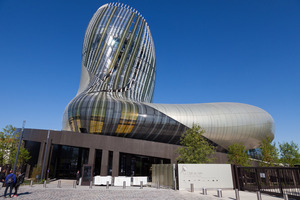 My first afternoon is spent visiting La Cité du Vin, an interactive museum dedicated to wine and viticulture from around the world that opened in June 2016 in a contemporary, curved building clad in glass and aluminium panels with a sinuous 10-storey tower alongside the Garonne River.
My first afternoon is spent visiting La Cité du Vin, an interactive museum dedicated to wine and viticulture from around the world that opened in June 2016 in a contemporary, curved building clad in glass and aluminium panels with a sinuous 10-storey tower alongside the Garonne River.
I spend a couple of hours there, including trying some local wines and taking in the panoramic views from the eighth-floor Belvedere tasting room, but could easily linger far longer. There is also a panoramic restaurant and a wine cellar that stocks 800 wines from all over the world.
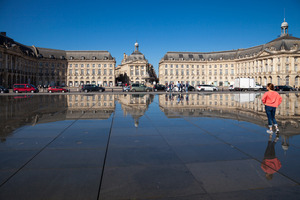 Foregoing a six-stop ride on one of the city’s swish new trams, I stroll along the delightful riverside promenade, busy with people enjoying the warm early-evening sun, to the city centre. I return to the Garonne promenade on my final morning, to admire the wonderful riverfront architecture. Sylvie shows me the Miroir d’Eau (Water Mirror), a captivating attraction comprising a huge slab of granite that becomes a shallow water pool perfectly reflecting the ornate 18th century Place de la Bourse buildings before sending up an artificial mist that engulfs enthralled children and smiling adults alike. It’s a joy to watch the pleasure it creates.
Foregoing a six-stop ride on one of the city’s swish new trams, I stroll along the delightful riverside promenade, busy with people enjoying the warm early-evening sun, to the city centre. I return to the Garonne promenade on my final morning, to admire the wonderful riverfront architecture. Sylvie shows me the Miroir d’Eau (Water Mirror), a captivating attraction comprising a huge slab of granite that becomes a shallow water pool perfectly reflecting the ornate 18th century Place de la Bourse buildings before sending up an artificial mist that engulfs enthralled children and smiling adults alike. It’s a joy to watch the pleasure it creates.
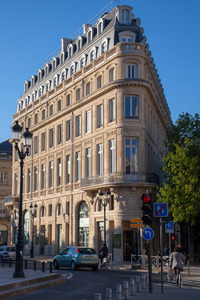 My destination on the first evening is La Maison du Vin de Bordeaux – the headquarters of the Bordeaux Wine Council (CIVB), where I meet Lucius and Sylvie for more wine tasting in its ornately-decorated Bar a Vin, a wine bar open to all. The grand 18th century building, shaped like a ship’s prow, also houses a wine school that offers classes and courses from introductory to advanced throughout the year.
My destination on the first evening is La Maison du Vin de Bordeaux – the headquarters of the Bordeaux Wine Council (CIVB), where I meet Lucius and Sylvie for more wine tasting in its ornately-decorated Bar a Vin, a wine bar open to all. The grand 18th century building, shaped like a ship’s prow, also houses a wine school that offers classes and courses from introductory to advanced throughout the year.
Dinner, at nearby La Brasserie Bordelaise, is a true taste of Bordeaux. All its meat and vegetables come from local suppliers. Wine may be the lifeblood of the region but they also take their food pretty seriously. There are four eateries with two Michelin stars, two of them in the city including one by Gordon Ramsay, and another 10 with one Michelin star.
I am shown the downstairs section of the restaurant that doubles as its wine cave. Among the 700 different wines on offer I spot a 2006 Petrus, a snip at 2,200 euros a bottle. Sadly, I am not offered a sip.
Over the next two days, Lucius takes me on a tour of the region, with golf on two magnificent courses and visits to local wine estates. Looking at a map as we drive is like reading a wine list. There are famous appellations everywhere and we pass vineyard after vineyard.
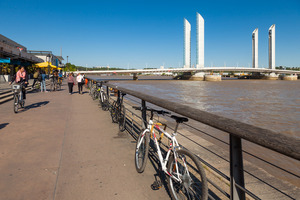 The Romans first planted vines here. The vineyards expanded in the Middle Ages, during which time Aquitaine came under English rule for 300 years until French victory at the Battle of Castillon ended the Hundred Years’ War in 1453.
The Romans first planted vines here. The vineyards expanded in the Middle Ages, during which time Aquitaine came under English rule for 300 years until French victory at the Battle of Castillon ended the Hundred Years’ War in 1453.
The English were among the first to appreciate the red wines from the Bordeaux region, giving them the generic name of claret, and they reacquired a taste for them in the golden age from the 1850s that led to an explosion of wine chateau building. Today, over 110,000 hectares (almost 275,000 acres) in the region are under vines. There are nearly 7,000 wine growers and 65 appellations and it is the largest AOC (Protected Designation of Origin) vineyard region in France.
The Greens
Compared to wine, golf is a more recent arrival to the Bordeaux area. Accompanying my host, Lucius McPhilemy from tour operator Greens & Grapes, the first course we play is the Grand Saint Emilionnais Golf Club, an hour east of Bordeaux and just six miles from the pretty, fortified town of Saint Emilion. 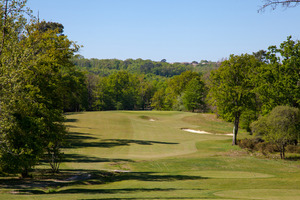 Opened in 2015 and already highly acclaimed by critics, it is the first design in Continental Europe by American Tom Doak, one of golf’s top architects, and is owned by former top French golfer and European Tour pioneer Gaeten Mourgue d’Algue and his family. There is accommodation in three houses by the course but the plan is to turn it into a resort with a hotel offering up to 90 rooms behind the ruins of a chateau that will be renovated to become the new clubhouse.
Opened in 2015 and already highly acclaimed by critics, it is the first design in Continental Europe by American Tom Doak, one of golf’s top architects, and is owned by former top French golfer and European Tour pioneer Gaeten Mourgue d’Algue and his family. There is accommodation in three houses by the course but the plan is to turn it into a resort with a hotel offering up to 90 rooms behind the ruins of a chateau that will be renovated to become the new clubhouse.
The course is laid out in a valley of mature oak woodland and framed by vineyards yet plays more like a seaside links, requiring bump and run shots and plenty of thought. I thoroughly enjoy the round but the course beats me hands down, as I record a solitary par. A 12 handicap to my 23, Lucius fares a little better.
A hearty lunch in the clubhouse is followed by a visit to wine estate Chateau Troplong Mondot, its grand chateau dating to 1745 and just a 20-minute walk through its vineyards to Saint Emilion. 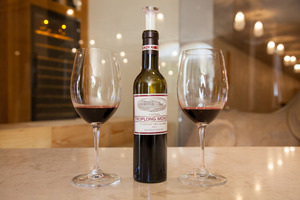 I am given a tour and taste its two wines, one of which is a Saint Emilion premier grand crus classé as designated in 2006 (it’s complicated – don’t ask). The wines are produced organically, with no insecticides, herbicides or fertiliser used, and 13 of its 28 hectares (32 of 69 acres) of vines are worked using horses. The estate has a gourmet restaurant and four cottages set amidst the vines. Individual and group visits are available, by prior appointment (contact@chateau-troplong-mondot.com).
I am given a tour and taste its two wines, one of which is a Saint Emilion premier grand crus classé as designated in 2006 (it’s complicated – don’t ask). The wines are produced organically, with no insecticides, herbicides or fertiliser used, and 13 of its 28 hectares (32 of 69 acres) of vines are worked using horses. The estate has a gourmet restaurant and four cottages set amidst the vines. Individual and group visits are available, by prior appointment (contact@chateau-troplong-mondot.com).
We then explore the hilly, cobbled streets of medieval Saint Emilion, listed as a UNESCO World Heritage Site in 1999 for its historic vineyard landscape. I am told that Saint Emilion is called the ‘village of 1,000 chateaux’ and 64 of them are grand cru classé designated. I’m not sure whether the town has more wine shops or restaurants, but it is certainly a place to eat, drink and be merry!
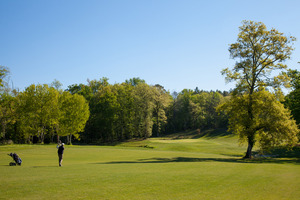 Next morning, we head to the Golf du Medoc Resort on the edge of the Haut-Medoc appellation, north-west of Bordeaux in a part of the region on the terroir-rich banks of the Gironde Estuary that also encompasses the ‘Fab Four’ wine villages of Pauillac, Margaux, St-Julien and St-Estephe. Golf du Medoc is a haven for golfing wine lovers and foodies, featuring two 18-hole courses, a 79-room four-star hotel managed by Sofitel, a spa and a gourmet restaurant offering local food and wine pairings.
Next morning, we head to the Golf du Medoc Resort on the edge of the Haut-Medoc appellation, north-west of Bordeaux in a part of the region on the terroir-rich banks of the Gironde Estuary that also encompasses the ‘Fab Four’ wine villages of Pauillac, Margaux, St-Julien and St-Estephe. Golf du Medoc is a haven for golfing wine lovers and foodies, featuring two 18-hole courses, a 79-room four-star hotel managed by Sofitel, a spa and a gourmet restaurant offering local food and wine pairings.
We play the Chateaux Course, designed by another venerated American golf architect, Bill Coore. A links-style heathland course, it opened for play in 1989 and has many echoes of North Carolina’s Pinehurst area and the courses of the Surrey and Berkshire sandbelt, its wide fairways lined by heather, gorse and maritime pine trees and punctuated by large bunkers. Named the best course in France in the World Golf Awards in 2014, it has hosted many tournaments, including the French open in 1999, and it held the grand final of the Challenge Tour for seven years until 2004.
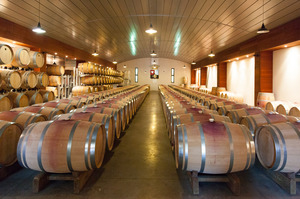 Lucius and I play much better this time. I even manage a birdie on the par-5 10th hole – reason enough for a celebratory drink, especially after wine bottle-shaped distance markers on the fairways whet my appetite.
Lucius and I play much better this time. I even manage a birdie on the par-5 10th hole – reason enough for a celebratory drink, especially after wine bottle-shaped distance markers on the fairways whet my appetite.
Golf du Medoc’s other course, the Vignes Course, is another heathland beauty by acclaimed Canadian designer Rod Whitman. Together with its sister course and the Grand Saint Emilionnais Golf Club, the three courses have come together to promote themselves under the Signature Golf Destination brand, under the slogan ‘The most prestigious golf route alongside the most prestigious wine route’.
After golf we drive into the Margaux appellation area, passing by yet more vineyards and imposing chateaux, among them the grandiose Chateau Margaux. But rather than join a big group tour there, Lucius takes me to the smaller 1855 grand cru classé (I said it was complicated…) Chateau Boyd-Cantenac, which has been in the Guillemet family since 1932.
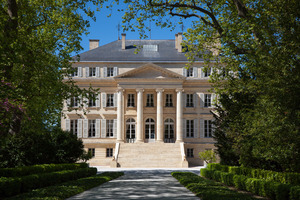 Owner Lucien Guillemet happily gives me a personal guided tour, taking me out into his 17-hectare (42-acre) vineyards as he enthusiastically talks about the area’s wines, its terroir and its history. He says the English are very much to thank for Bordeaux becoming as important for wine as it is now. He then gives me a very instructive tasting demonstration, explaining how the wines mature and change colour over time.
Owner Lucien Guillemet happily gives me a personal guided tour, taking me out into his 17-hectare (42-acre) vineyards as he enthusiastically talks about the area’s wines, its terroir and its history. He says the English are very much to thank for Bordeaux becoming as important for wine as it is now. He then gives me a very instructive tasting demonstration, explaining how the wines mature and change colour over time.
Visitors are welcome for tours and tastings, but should get in touch beforehand (contact@boyd-cantenac.fr).
After my short taste of Bordeaux and its surrounding region, I’ll be back – with my golf clubs, a corkscrew and an appetite!
More information
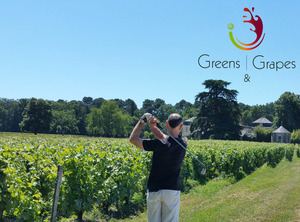 Greens & Grapes is a Bordeaux-based travel expert that organises ‘all-in-one’ golf, wine and gastronomy holiday packages to Bordeaux and south-west France. They can also put together bespoke holidays with accommodation, from self-catering apartments to luxury hotels.
Greens & Grapes is a Bordeaux-based travel expert that organises ‘all-in-one’ golf, wine and gastronomy holiday packages to Bordeaux and south-west France. They can also put together bespoke holidays with accommodation, from self-catering apartments to luxury hotels.
A four-day golf and wine break in Bordeaux or Saint-Emilion including three nights’ accommodation, breakfast, three rounds of golf and one three-course meal in a gastronomic bistro with two visits and wine-tasting at local châteaux in Saint-Emilion and Margaux (one is free exclusively for Silver Travel Advisor members) costs from 595 euros per person. Flights are excluded. Local transport options (car rental and chauffeuring) as well as other activities such as gourmet tours are available from Greens & Grapes. Other packages are available in Les Landes and The Basque Country.
